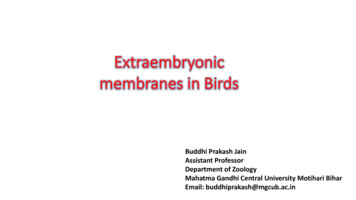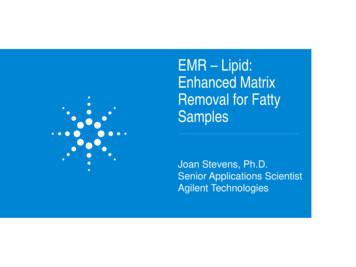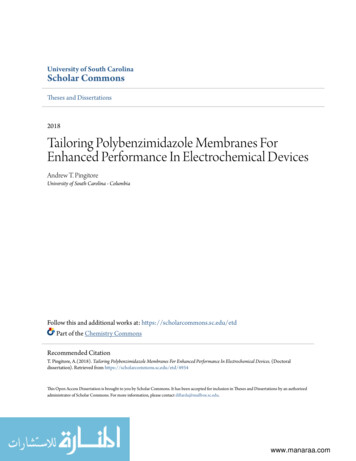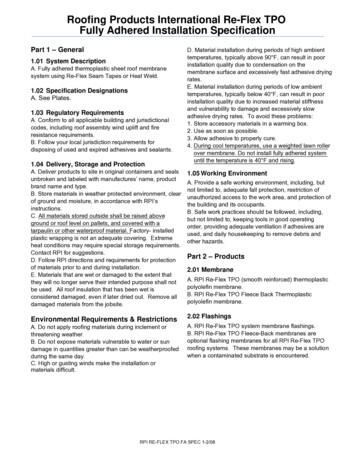
Transcription
Buddhi Prakash JainAssistant ProfessorDepartment of ZoologyMahatma Gandhi Central University Motihari BiharEmail: buddhiprakash@mgcub.ac.in
Followings are the objectives of the lecture: What are extraembryonic membranes? Differenttypesofextraembryonicmembranes and their functions.
Extraembryonic membrane:These are the membranes which do not formany part of the embryo proper but performsvarious functions which assist in thedevelopment of the embryo.These are discarded at the time of hatching.These membranes formed outside the embryo.
Amniotes: These are the vertebrates groupwhoseeggscontainextraembryonicmembranes for protecting the embryo.They lay eggs on the land.Example: Reptiles, Birds and Mammals.Anamniotes: These are the vertebrates groupwhose eggs do not contain extraembryonicmembranes during embryonic development.They lay eggs in the water.Example: Fish, Amphibia.
There are four types of extraembryonicmembranes in birds:1. Yolk sac.2. Amnion.3. Chorion.4. Allantois.
1. Yolk sac: Formed from splanchnopleureendoderm and outer mesoderm)(inner Well developed in the animals withmegalecithal egg as reptiles, birds andPrototheria. Formed completely on the 9th day ofincubation. In human it is vestigial.
Functions of Yolk sac: It surrounds the yolk. Its main function is indigestion. It serve as extraembryonic gut. It help in digestion of yolk and transfer thedigested material to the developing embryo. First respiratory organ in the embryo. Form yolk sac placenta in the marsupials.
2. Amnion:Formed of somatopleure (inner ectoderm andouter mesoderm).It surrounds the embryo. It appears after 30hours of incubation.A amniotic cavity is present between theamnion membrane and the embryo, whichfilled with the amniotic fluid. In this fluid filledcavity embryo floats.
Functions of Amnion: Protection of the embryo from the mechanicalinjury and desiccation. Amniotic fluid acts as shock absorber. Protect from sudden temperature changes.
3. Chorion:Formed of somatopleure (outer ectoderm andinner mesoderm).It forms the outermost boundary.Space between amnion and chorion is calledchorionic cavity which further providesprotection to the embryo.
Functions of Chorion: In reptiles, birds and prototherians, chorionalong with allantois acts as extra embryoniclung and helps in exchange of gases. Nutrition and protection.
4. Allantois:Formed of splanchnopleure (inner endodermand outer splanchnic mesoderm).Connected with the hindgut of the embryo.Develops on the third day of incubation fromthe floor of the hind gut as a outgrowth.
Functions of Allantois: Act as reservoir for the storing the excretorywastes of the embryo. Considered as extraembryonic kidney. Also helps in digestion and nutrition fromalbumen and calcium of the shell. It grows in the chorionic cavity. Its outermembrane fuse with the inner membrane ofthe chorion and forms allantochorion which ishighly vascular. Act as extraembryonic lungand provides surface for the gaseousexchange.
5 day chick embryo without shellhttps://www.macmillanhighered.com/
6 day chick embryo without shellhttps://www.macmillanhighered.com/
7 day chick embryo.https://www.macmillanhighered.com/
Extraembryonic membrane in BirdsBaggot,2009
dy-systems/embryology-of-the-chicken/Baggot 2009. Development of extraembryonic membrane and fluid ed.com/BrainHoney/Resource/6716/digital first content/trunk/test/hillis2e/asset/img ch38/c38 fig18.htmlDevelopmental Biology by S.F. %20Membranes%20Placenta%20%2710.pdf
Thank You
Extraembryonic membrane: These are the membranes which do not form any part of the embryo proper but performs various functions which assist in the










